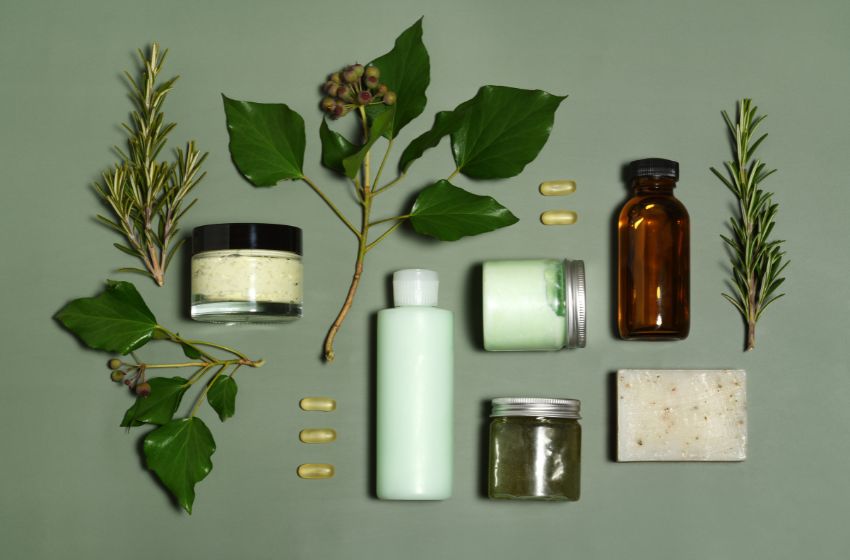
©annakhomulo via Canva.com
June 9, 2025
Are Younger Americans Redefining the Retail Wellness Market?
Wellness products are having a moment. From traditional retailers like drug stores and supplement outlets to direct-to-consumer brands and health and beauty companies, all are striving to engage consumers who are more mindful of their health than ever before.
Now, according to McKinsey & Company’s fourth annual Future of Wellness research project, one commonality among the wellness retail sector is emerging: Younger Americans, notably millennials and members of Gen Z, are “redefining the landscape” in various ways, perhaps signaling that established players in the space could be in need of a pivot point to meet these changing expectations.
Gen Z, Millennials Prioritizing Wellness More Often Than Older Generations
The study underscored a few major statistics. First, the wellness category represents more than $500 billion in annual spend in the United States alone, according to McKinsey estimates, growing at about 4% to 5% each year — and that spend is resilient, even in the face of persistent macroeconomic turbulence.
More specifically, however, younger Americans appear to be outpacing their older counterparts when it comes to prioritization of wellness. Study data indicated that 30% of Gen Zers (born between 1997 and 2012) reported prioritizing wellness “a lot more” as compared to a year ago, compared with 23% of older Americans.
Furthermore, with zoomers and millennials reporting significantly higher levels of burnout and worse health in broad terms as compared to older cohorts, it should come as no surprise that they comprise an outsized proportion of wellness spend. Despite making up just over one-third (36%) of the adult U.S. population, younger Americans belonging to those two generations are responsible for 41% of total wellness spend on a yearly basis. U.S. consumers ages 58 and up account for 35% of the population, but just over one-quarter (28%) of said spend.
Gen Z and Millennial Consumers Lead in Appearance, Mental Health Concerns and Overindex on Discretionary Wellness Categories
The report, which highlighted several key data points, brought a few trends to light.
“Gen Zers place a higher priority on appearance than other generations do. ‘Better appearance’ shifted from the sixth-most-important dimension of health and wellness for U.S. Gen Z consumers in 2023 to the third-most-important dimension in 2024; Gen Zers in other markets placed a greater emphasis on appearance as well. These consumers are also purchasing beauty-related products at a higher rate than other generations are. Social media has helped drive this trend,” the study authors wrote.
Wellness areas that respondents considered to be very important, and in which Gen Z and millennials recorded significantly higher levels than the overall average, included mindfulness and mental health (~59% versus ~54% average), sexual health (~49% versus ~36% average), and skin and hair care (~44% against 34% average).
And while younger consumers in the United States reported sentiments of being “almost always stressed” at a far higher prevalance than other generations (about 40% of zoomers said as much, versus 23% of the rest of respondents), older consumers were more interested in heart health and cognitive-boosting wellness products — perhaps a logical conclusion.
One stark divide: Gen Zers and millennials were far more likely to overindex in terms of purchases of items deemed discretionary in nature, including “health-tracking devices, massage tools, IV drips, and beauty and mindfulness apps,” per the report’s authors.
On items deemed least discretionary (menstrual-care products, analgesics, oral-care products), younger Americans underindexed on 50% of item purchases (slightly overindexing on 19% and significantly overindexing on 31%). However, when it comes to the most discretionary categories of products (massage devices, beauty apps), zoomers and millennials overindexed on all 14 of the most discretionary subcategories — significantly overindexing in 71% of purchase instances.
When combined with the aforementioned notion that these same younger U.S. consumers are driving an outsized proportion of the spend, what does that imply about the future of the retail wellness category? Will the broader market reshape itself, or will these same consumers adjust course as they, too, grow older?
As the McKinsey authors put it: “A common question arises when analyzing Gen Z spending habits: Will Gen Z’s preferences shift to resemble those of older generations over time, or will they redefine norms for all consumers as they grow older?”
Discussion Questions
Will younger Americans significantly redefine the retail wellness market to focus on their outsized spend? Is this already occurring, and if so, how so?
What do you think of the question posed by the McKinsey & Company report authors? Is it possible that as they age, Gen Z and millennial Americans will adopt more traditional modes of consumption in terms of wellness retail products? In which ways might they differ from their predecessors?
Which brands are standouts in their ability to leverage the desires of Gen Z and millennial consumers interested in wellness?
Poll
BrainTrust
Mohamed Amer, PhD
CEO & Strategic Board Advisor, Strategy Doctor
Neil Saunders
Managing Director, GlobalData
Lisa Goller
B2B Content Strategist
Recent Discussions







I am not sure about redefining it, but they are certainly boosting it through rituals and practices which drive spending on wellness products and services. That said, wellness is a very diffuse term and to many younger people it can encompass everything from mental health to skin care to sleep hygiene. That’s why you see many pockets of growth from supplements to wellness apps. From our data, younger consumers are also very experimental and prepared to try new things in the wellness arena.
Actually, I think that as of now, the Boomers are redefining the wellness and health care market.
It is about time. I imagine the Boomers are the least healthy cohort.
Really? In my world, at least, people have always been obsessed about health and youth. Pro tips: Millennials didn’t start the acai craze…Boomers did. Ditto retinol. I think Mohamed has it right…God, back in the 80’s we had macrobiotics, the Hippocrates Institute (which still lives, but has moved from Boston to Florida), clay (yes, I drank it for a couple of weeks), carrot juice fasts, colloidal silver, a bag full o’vitamins, and they’re still at it.
It may be the oldest cohort, but least healthy? I don’t think so.
I agree, I think its all generations that are redefining it now, it feels like more of a movement towards wellness and self care (vs health care!)
I’m not impressed by the vagueness (of the terminology, or how the age groups are defined, or lack of any comparatives to earlier figures [other then “last year”]); So as always in such cases where my fluff meter is triggered, my answr is “no”.
(Actually let me expand on an earlier point: perhaps the age groups were too well defined: I’m not now, never have been and am unikely to ever be impressed by the spending power of a group that begins at age 13.)
The McKinsey study emphasizes six dimensions of wellness: health, sleep, nutrition, fitness, appearance, and mindfulness. Younger consumers tend to over-index in these areas. However, Baby Boomers and Gen X also value wellness, often seeking it through preventive care and holistic medicine within the larger healthcare system. According to the Global Wellness Institute, older consumers will become the significant driver of opportunities for wellness companies across all segments of the industry, including beauty, preventive healthcare, wellness tourism, and wellness technology. Additionally, Baby Boomers, as a generation, have three times the spending power of Gen Z.
What we are witnessing is market segmentation, not market redefinition. Gen Z and Millennials are creating a parallel wellness entertainment industry—featuring apps, gadgets, and experiential services—that may seem innovative but represents only a small portion of overall wellness spending. Wellness norms are not fixed, as McKinsey suggests; they are influenced by different life stages. This situation is less about traditional preference and more about life-cycle progression, enhanced by digital technology. While younger Americans are not redefining wellness as a whole, they do leave a significant digital and social mark, setting trends in the narrower retail wellness arena. However, this cultural influence is far less significant economically. By focusing on just six lifestyle-oriented wellness dimensions, McKinsey has essentially pre-selected for categories where younger consumers would naturally over-index.
Thank you Mohamed, for providing so much insight and clarity in 2 paragraphs.
I am often disturbed by the “wellness” BS I see on social media. The younger are clearly interested in wellness. Sadly, so much of the information comes from the “ol’ time medicine man”. After all, they have witnessed the older generation leading the way in unhealthiness.
And unregulated health/wellness products move about 3x the dollars as regulated pharmaceuticals and medical devices, despite not needing proof of efficacy or safety. And now they have their own snake-oil salesman and his henchmen in charge! What could go wrong?
After watching a segment on Good Morning America today on children and screen time, I am happy younger gens are looking out for themselves. Too much screen time at a young age really messes with social and self-soothing skills.
From açai bowls to retinol and supplements, younger consumers are already influential in wellness. Brands that help shoppers look and feel good can deepen loyalty even as the market softens.
I think it’s a little odd that in an article that talks abouty $500 billion in annual wellness spending, there is no mention of diet, exercise or obesity (or is my boomer cognition slipping?). Appearance, fo course, but not obesity. Aren’t we, as a population, shockingly more obese than 30, 40, 50 years ago? I don’n know the exact statistic, but yeah, we damned well better be more interested in wellness.